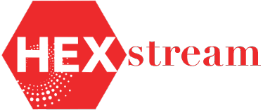The Cloud Power Play: Choosing Between OCI, Snowflake And Databricks For Smarter Utilities
By Bharath Moola, HEXstream data solutions engineer
Utilities are transforming faster than ever. From smart meters and IoT sensors to renewable integration and outage analytics, data now drives every part of the business. But as the flow of information grows, the real challenge is choosing the right platform to manage it.
Three cloud players dominate this discussion: Oracle Cloud Infrastructure (OCI), Snowflake, and Databricks. Each has its own strengths and understanding them can help utilities turn raw data into real-time intelligence.
Oracle Cloud Infrastructure (OCI): Power through integration
Utilities have long relied on Oracle for mission-critical systems like customer information, outage management and billing. OCI takes that legacy and extends it into a unified cloud environment. It connects operational data, analytics and AI so teams across planning, engineering and customer service can work from one source of truth.
The Autonomous Database reduces manual tuning, while the AI Data Platform introduces built-in machine learning and vector search for predictive insights. Utilities can use these capabilities to forecast demand, detect asset failures, or analyze outage trends without building separate systems. Because OCI integrates easily with existing Oracle applications,
modernization happens with less disruption.
OCI is the reliable choice for organizations that value control, security and seamless integration across their operational and analytical layers.
Snowflake: Simplicity and speed
Snowflake has earned its reputation as the easiest cloud warehouse to use. It separates compute and storage, enabling utilities to scale up when meter or sensor data surges and scale down when usage drops. That elasticity is ideal for handling AMI, SCADA and customer-analytics workloads.
Analysts can query massive datasets using familiar SQL while the platform handles performance automatically. For leadership dashboards and compliance reporting, Snowflake delivers quick, clean results. It also supports modern workloads through Snowpark, which brings Python and AI capabilities directly into the platform.
Snowflake is a favorite for utilities that want fast deployment, self-service analytics, and minimal maintenance. It excels when teams prioritize speed and simplicity over heavy customization.
Databricks: Innovation at scale
Databricks is built for experimentation and advanced analytics. It unifies data engineering, machine learning, and streaming in one platform. Utilities use it to process massive IoT streams, predict equipment failure, and optimize grid operations with AI models.
Its Delta Lake technology ensures reliability and governance across huge data lakes. Engineers and data scientists can collaborate in shared notebooks, building predictive models that combine weather data, sensor readings and asset histories.
Databricks offers power and flexibility for utilities pushing into real-time analytics and AI. It demands more setup and management than Snowflake, but it rewards that effort with deep control and creative freedom.
Comparison at a glance
Capability | Oracle Cloud Infrastructure (OCI) | Snowflake | Databricks |
Core Focus | Unified data, analytics, and AI in one enterprise platform | Cloud-native | Open |
Ideal Use Case | Integration | Fast analytics, regulatory reports, and BI dashboards | Real-time |
Ease of Use | Moderate, | Very easy | Moderate |
AI/ML Features | Built-in AI, vector search, and semantic enrichment | Snowpark | MLflow for |
Scalability | High scalability across Oracle Cloud regions and services | Elastic, | High, based on cluster configuration and autoscaling |
Governance and Security | Enterprise-grade, | Mature | Flexible, |
Best Fit For | Enterprise-wide | Analytics | Data scientists and engineers building AI and real-time solutions |
The right platform for the right purpose
Choosing between these platforms is not about picking a winner, but rather aligning technology with business goals.
- OCI suits utilities that want a single, governed environment linking operations, analytics and AI.
- Snowflake is perfect for organizations focused on data accessibility and clean reporting.
- Databricks is for teams exploring advanced analytics and real-time intelligence.
Many utilities combine them. For instance, a company might use Databricks for data processing and forecasting, Snowflake for analytics and dashboards, and OCI for integration with Oracle-based operational systems. This hybrid model provides both innovation and stability.
Powering the utility of tomorrow
The future of utilities lies in data that can act, not just inform. Whether it’s predicting outages, balancing renewable generation, or personalizing energy services, the right data platform makes all the difference.
OCI brings strength and integration. Snowflakes deliver clarity and speed. Databricks enables creativity and intelligence. Together, they define the cloud power play that will keep utilities reliable, efficient and ready for the next generation of smart energy.
NEED HELP WITH YOUR CLOUD MIGRATION? CLICK HERE TO CONTACT US.
